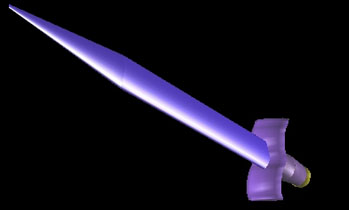Automatic Lighting Design using a Perceptual
Quality Metric
Ram Shacked, Dani Lischinski
some additional lighting design
results
For each example
several images are shown, rendered according to the following lighting
parameters specifications:
- Default1: naive lighting settings using a
single light source.
- Default4: naive lighting settings using four
light sources.
- Optimized - Configuration1: optimized lighting using a single
free light source, with no constraint on light
direction.
- Optimized - Configuration2: optimized lighting using one free
light source constrained to illuminate scene from above, and a secondary light
source at the viewpoint.
- Optimized - Configuration3: optimized lighting using two free
light sources, with no constraint on light direction. This configuration is
shown only for cases in which it succeeds to overcome some deficiencies
present in the two previous optimization
configurations.
For optimized images, the optimization time
is given in the caption in parentheses.
Dagger
(a) Default
1 |
(b)
Default4 |
(c) Optimized -
Configuration1 (3.9 sec.) |
(d) Optimized -
Configuration2 (3.7 sec.) |
|
Dagger (4981
polygons)
Default
illuminations: (a)
and (b) shape can be perceived although illumination on blade is too flat
and can be enhanced; some details are missing in the base of the blade and
shield;
Optimized illuminations: (c) and (d) perception
of blade shape and material is enhanced, details missing in previous
images are more
prominent. |
Cherries
|
(a)
Default1 |
(b)
Defalut4 |
(c) Optimized -
Configuration1 (2.8 sec.) |
(d) Optimized -
Configuration2 (2.5 sec.) |
|
Cherries (824
polygons)
Default
illuminations: (a)
front cherry lacks highlight, while highlight on back cherry is very dim;
Both cherries somewhat lack shading gradation and 3D appearance is of
limited prominence; Some edges around the contact point of front cherry
and stem are invisible; Stems appear dark and hardly any shape information
is conveyed. (b) {}``contradictive{}'' illumination, where 3-D impression
is lost due to the excess in illumination directions; Some edges between
the cherries and between front cherry and stem are not prominent enough or
even invisible;
Shape information of stems is lost due to too
uniform shading.
Optimized illuminations: (c) highlights
and shading gradiation on both cherries and stems convey shape information
and creates a vivid 3D impression; All edges are prominent; (d) shading on
stems suffer from the fact that primary illumination arrives from above
(polar angle = 56 degrees) and is somewhat deficient, but still improved
relatively to default cases; the cherrires have similar qualities to
(c). |
Sword:
(a)
Default1 |
(b)
Defalut4 |
(c) Optimized -
Configuration1 (4.1 sec.) |
(d) Optimized -
Configuration2 (4.2 sec.) |

(e) Optimized -
Configuration3 (4.9 sec.) |
|
Sword (1520
polygons)
Default
illuminations: (a)
and (b) introduce almost uniform shading on both the blade and hilt, and
fails to communicate shape and material information, as well as some fine
details on the hilt. Edges between hilt and shield are insufficiently
prominent.
Optimized
illuminations: (c)
introduce major improvement in blade and hilt illumination, but at the
cost of neglecting the shield, where shape information is lost in the dark
shade; (d) suffers from the same deficiency, although more light reaches
the shield; Adding a second optimized light (e) enables proper
illumination on the shield
too. |
Air
Boat
(a)
Default1 |
(b)
Default4 |
(c) Optimized -
Configuration1 (4.1 sec.) |
(d) Optimized -
Configuration2 (3.6 sec.) |
|
Air
Boat (6686
polygons)
Default
illuminations: (a)
fails to display the the different 3 levels of the boat's floor: all three
are displayed in constant dark intensity and edges are invisible; this
deficiency occurs also with the top right face of the boat's frame; Back
of the chair lacks any shading gradients yielding in poor communication of
its curved shape; (b) introduce too uniform shading resulting in reduced
3D impression; Floor levels are hardly noticeable; Some edges on boat's
side are lost; Fails to clearly display the engine construction on the
back.
Optimized illuminations: (c) All edges are visible;
Floor levels are clearely sepatated due to different shading intensities
and more prominent edges; Shading gradients on the back of the chair help
to communicate its curved shape. All parts of the engine structure are
conspicuous; (d) Similar qualities to (c), however engine structure is
somewhat less
conspicuous. |
Galleon
(a)
Default1 |
(b)
Defalut4 |
(c) Optimized -
Configuration1 (3.3 sec.) |
(d) Optimized -
Configuration2 (4.8 sec.) |

(e) Optimized - Configuration3
(6.5 sec.) |
|
Galleon (4699
polygons)
Default
illuminations: (a)
illumination is too flat on side of ship's body and on back sales. some
details appear blurred and edges at front and back sales are not prominent
enough; and (b) almost uniform shading on most ship's regions.
Optimized illuminations: (c) and (d) introduce major
improvement in both ship's body and sales; Adding a second optimized light
(e) enables highlights on
sales. |
Paddle Boat
Foot
(a)
Default1 |
(b)
Default4 |
(c) Optimized -
Configuration1 (3.9 sec.) |
(d) Optimized -
Configuration2 (2.4 sec.) |
|
Foot (4204
polygons)
Default
illuminations: (a)
dark regions on most finger bones hide fine shape and geometry
information; (b) here shape information is deficient due to weak or
missing shading gradients on some of the finger bones.
Optimized illuminations: (c) and (d) successfully communicate
the geometry of the finger
bones. |
|